I cycle past this place at least twice a day. Hopefully our Governments will do something to fix these issues soon.
TEXT AND PICTURES BY GEOFF VIVIAN
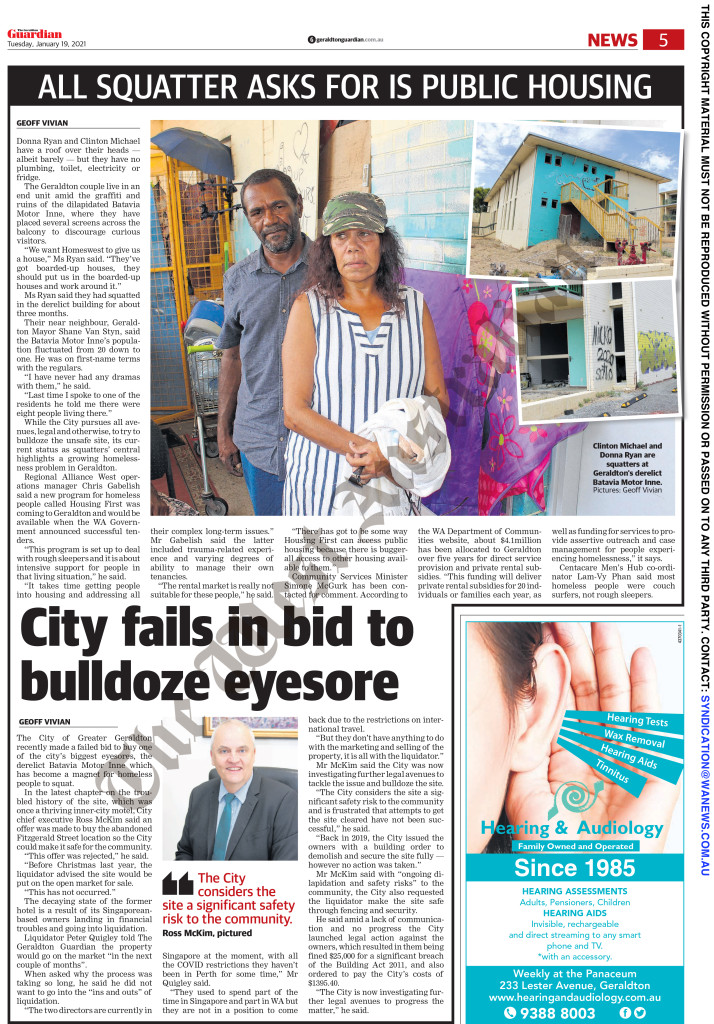
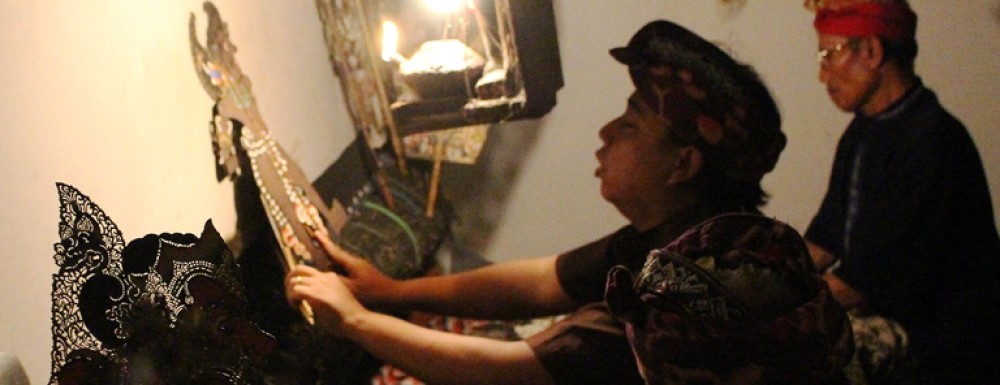
I cycle past this place at least twice a day. Hopefully our Governments will do something to fix these issues soon.
TEXT AND PICTURES BY GEOFF VIVIAN

Should a political reporter be a lobbyist?
Or, if a well-timed question to a minister prompts her to seek more information and perhaps change her mind, is this lobbying? Continue reading
It’s on again. Greens are pushing for some kind of compensation for canola growers who have had their crops contaminated with neighbours’ genetically modified seed.
Such farmers can find their crops attract much lower prices on the world market.
This story began as a media release from a politician but quick interviews with an industry expert and the farmer most affected by GM contamination brought it to life.
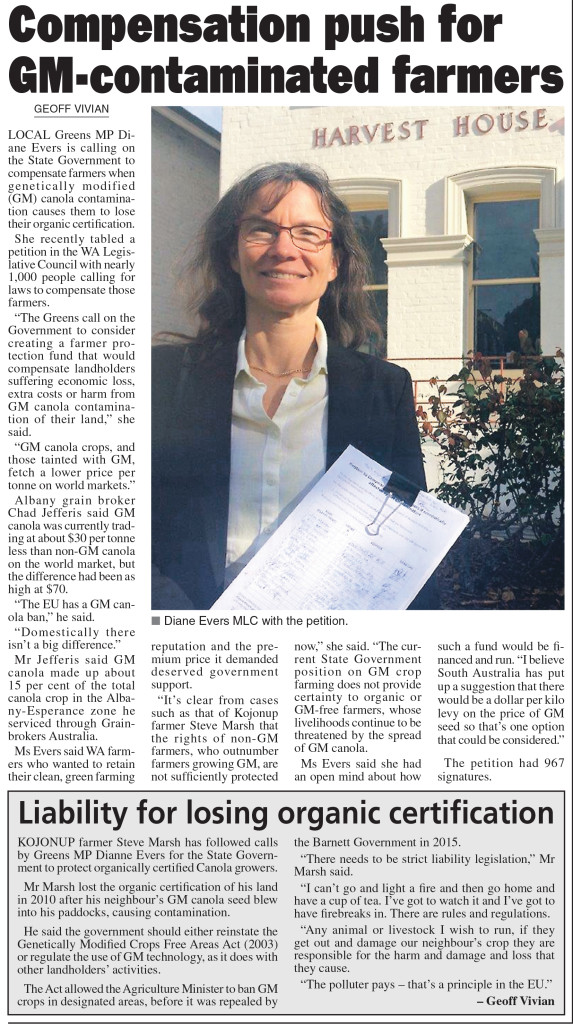
From The Great Southern Weekender Thursday June 29 p5.
x
A formerly “threatened” species has been reclassified “vulnerable” as the birds start to repopulate the East Kimberley.
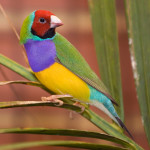
Photo by Martin Pot
Two scientists, Sarah Pryke and Sarah Legge, have worked hard to identify the Gouldian Finches’ ideal habitats and feed, and a third, Alex Watson, is working with Kija Rangers to re-establish them.
The method depends on mimicking the effects of the traditional Aboriginal mosaic burning practices using modern technology.
As the website Science Network WA is now defunct I have reproduced the story here: Continue reading
If you catch a protected fish – in this case a large shark – you are supposed to let it go as soon as possible.
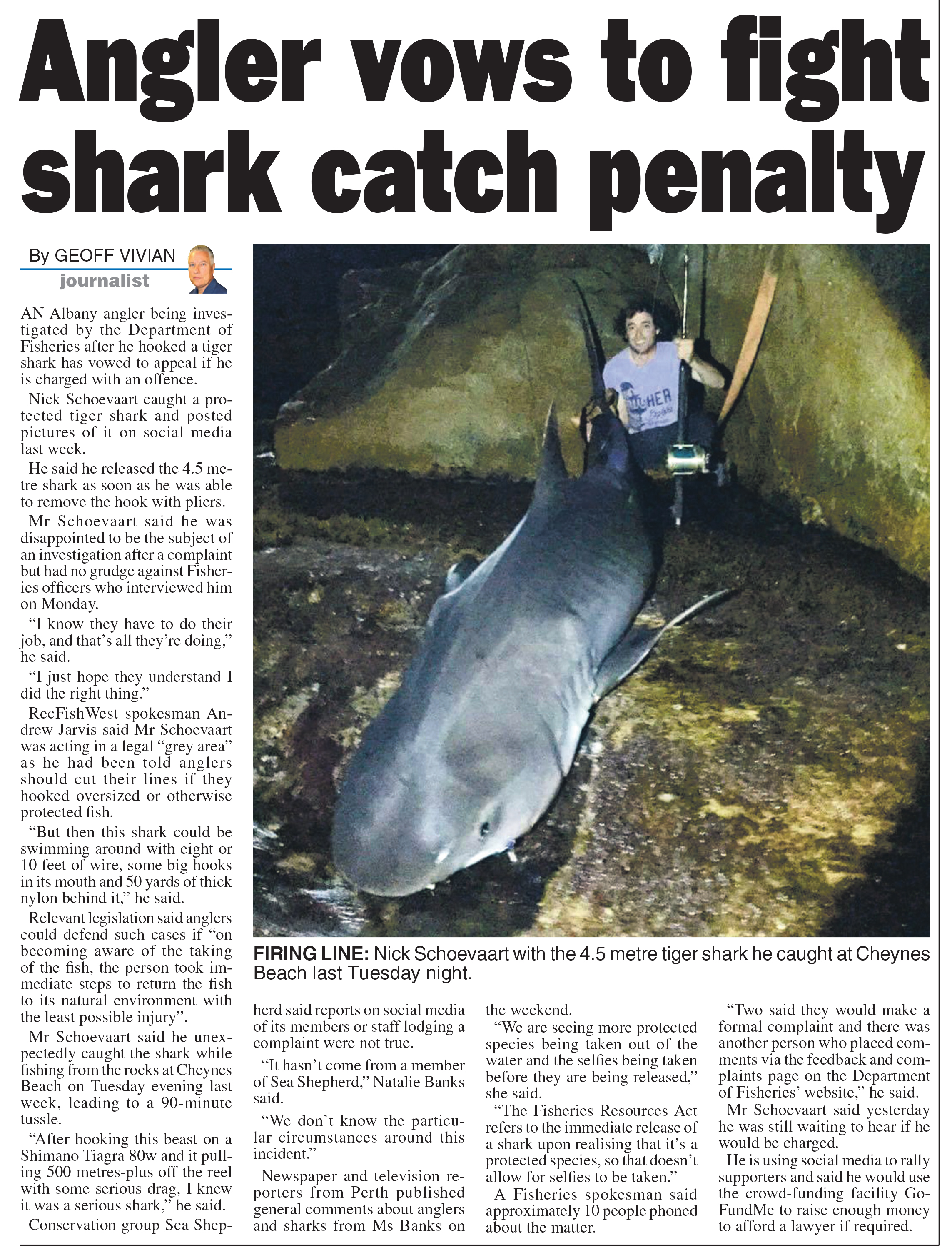
But what if you take a photograph of it first?
Anglers do this, and so for that matter do people studying fish. Continue reading
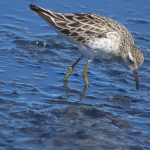
Courtesy Sora Estrella.
Can a large-scale industrial development benefit endangered and threatened species, such as certain migrating shore birds?
It seems Dampier Salt’s Pilbara operations are providing an important diet supplement to birds like the Red Knot, Great Knot and Bar-tailed Godwit.
Science Network [read this story]
Science Network WA has ceased publication so I have copied the story here: Continue reading
I think this was my first hard news story to be published. I was running the radio station at Halls Creek and studying journalism online at Griffith University. Style is a little clunky but this is the kind of story I still love to do today. Thank you Gerard Willett for giving me a break!
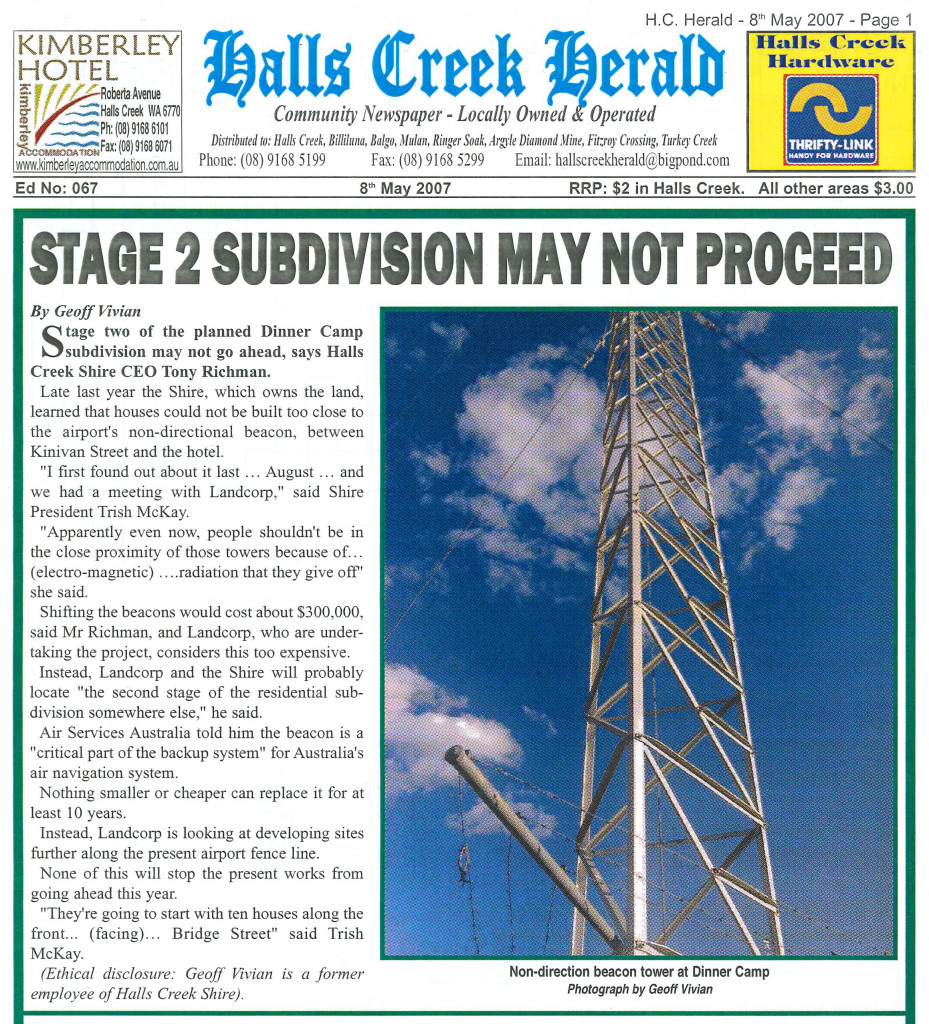
I have never been a regular police or court reporter but I think it is worth posting this to show I can be versatile if needed. The Irish Brides story is nice too.

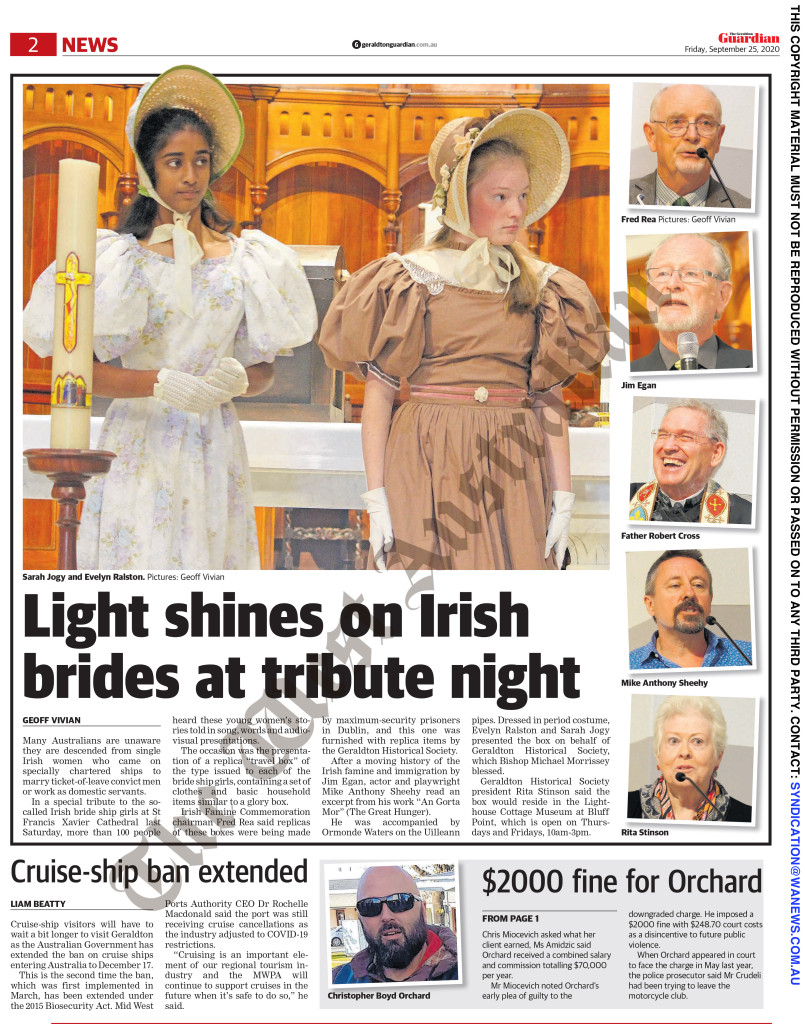
TEXT AND PICTURE BY GEOFF VIVIAN
A big Perth egg producer copped a million-dollar penalty for selling bogus free-range eggs.
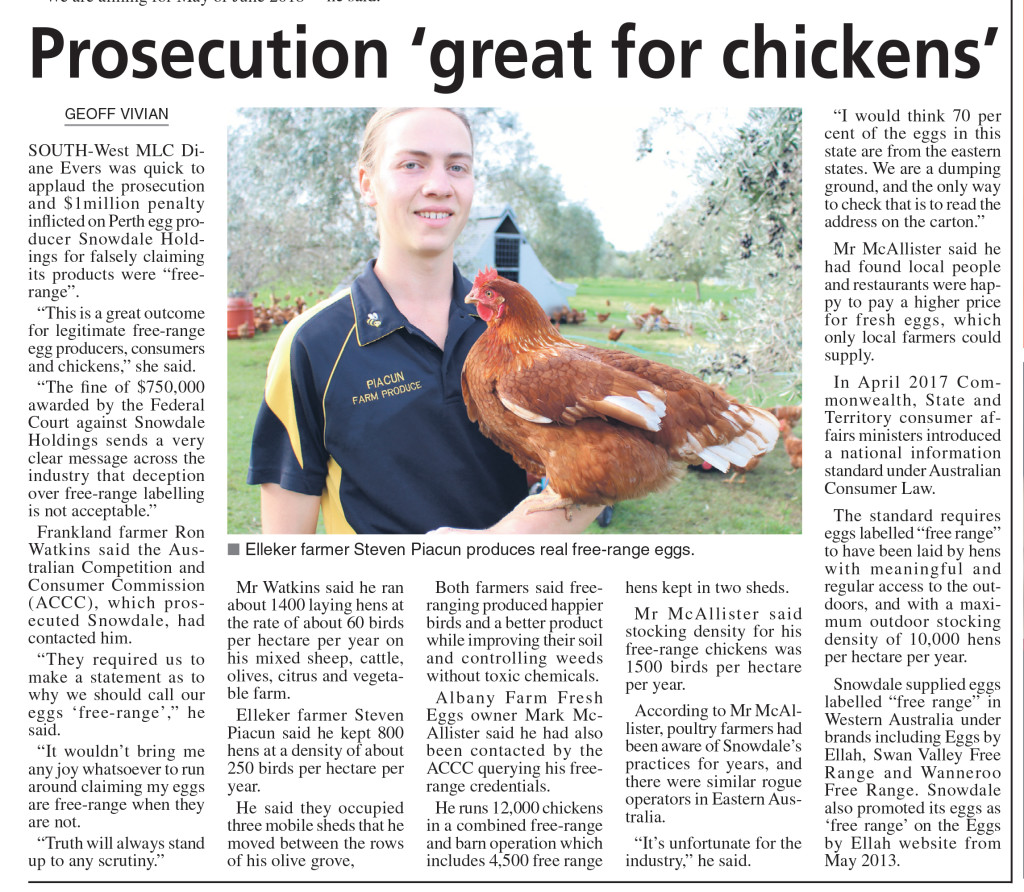
From The Great Southern Weekender, Thursday August 3 2017, p3.
I turned this into a pleasant opportunity to let local free range egg farmers explain their practices to our readers.
TEXT BY GEOFF VIVIAN
THE WA Government and Noongars are close to settling a deal that will see no more Native Title claims in Australia’s south west.
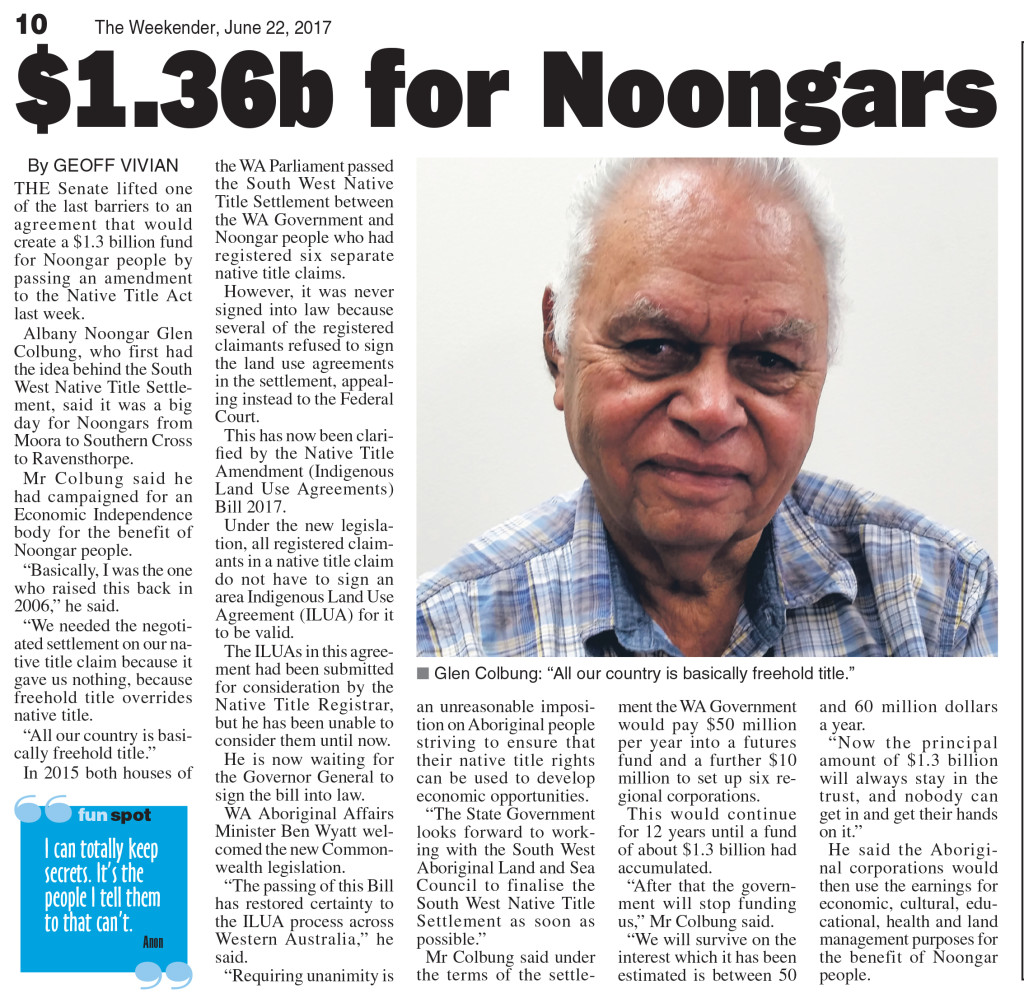
From The Great Southern Weekender Thursday, June 22, p10.
TEXT BY GEOFF VIVIAN
EXPLORATION company Ausgold is inching ever closer to the day it hopes to begin open pit mining in several locations near Katanning.
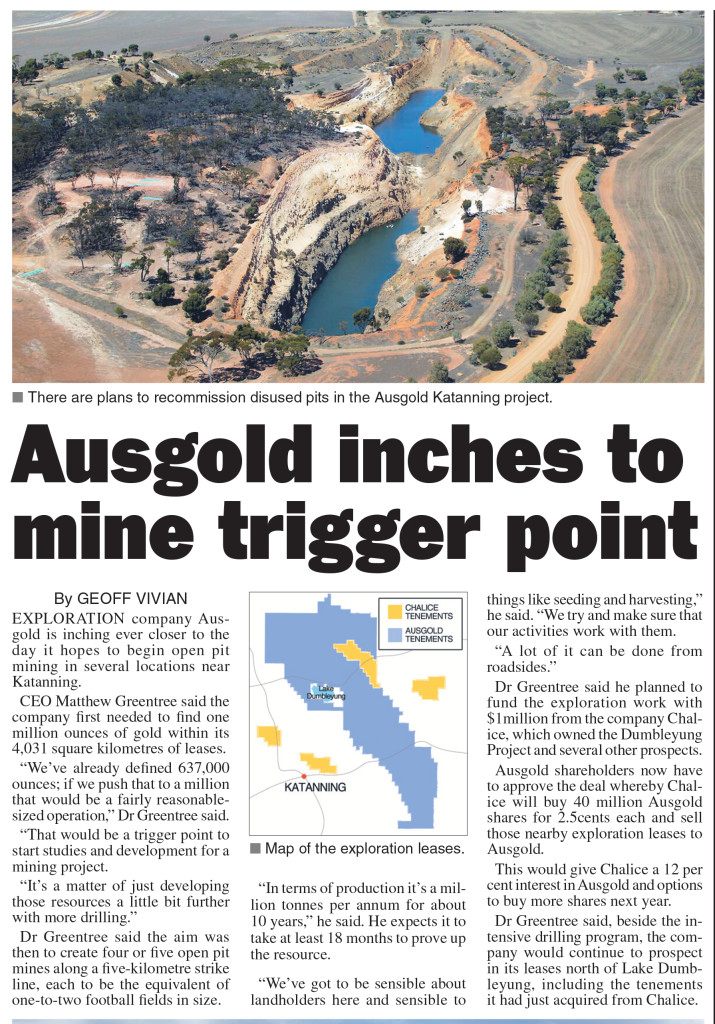 CEO Matthew Greentree said the company first needed to find one million ounces of gold within its 4,031 square kilometres of leases.
CEO Matthew Greentree said the company first needed to find one million ounces of gold within its 4,031 square kilometres of leases.
“We’ve already defined 637,000 ounces; if we push that to a million that would be a fairly reasonable sized operation,” Dr Greentree said.
“That would be a trigger point to start studies and development for a
mining project.
From The Great Southern Weekender Thursday, June 22, 2017 p5.
TEXT BY GEOFF VIVIAN
Opening up a new export market is always exciting for an Australian business, especially for the first time.
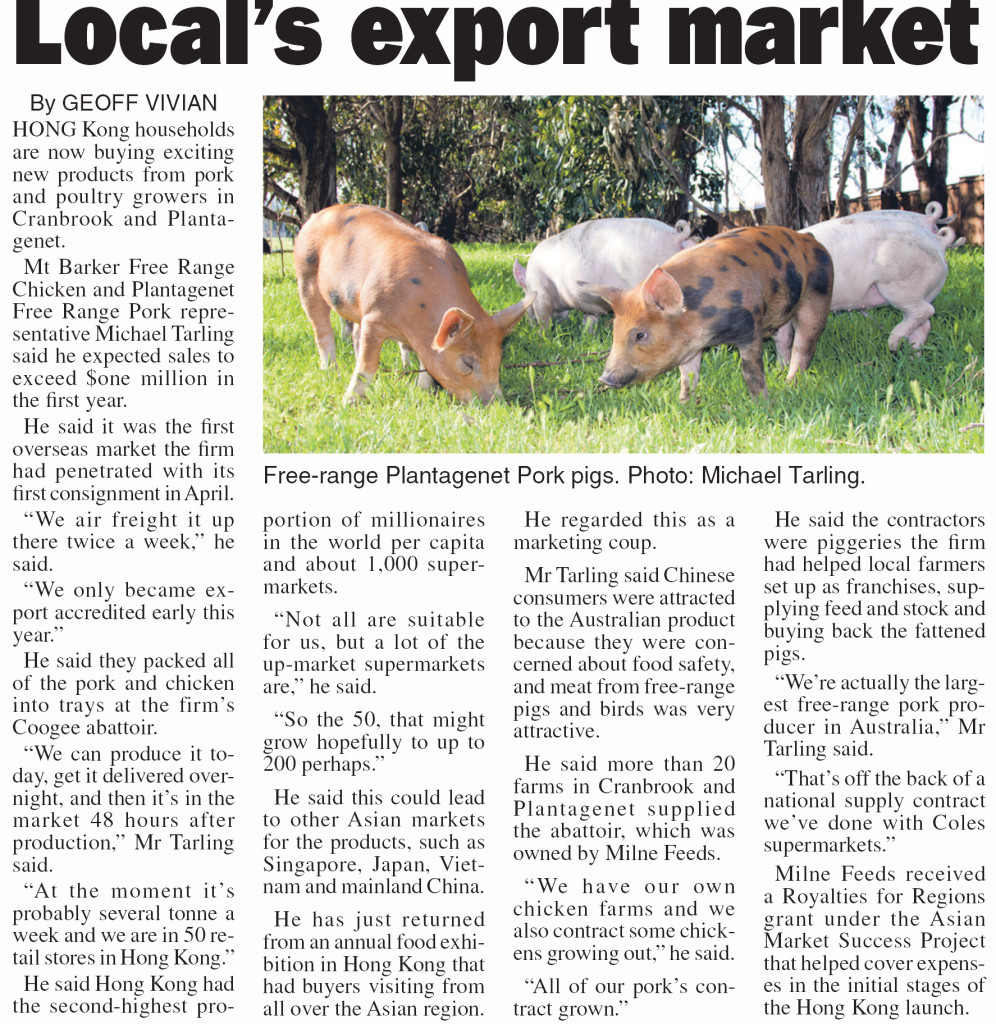
From The Great Southern Weekender Thursday, June 8, 2017.
Text by GEOFF VIVIAN
TWO Australian National University researchers have used a high-tech isotopic method to estimate the potential age of the Burrup Peninsula’s rock art, based on the rate at which the rock surface erodes.
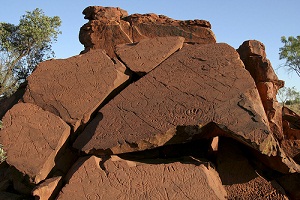
“Our measurements indicated that some of the surface erosion rates at the Burrup are amongst the lowest in Australia and indeed the world”—Prof Pillans. Image: Paul Williams
Geologist Professor Brad Pillans and nuclear physicist Professor Keith Fifield employed cosmogenic radionuclide measurements of the isotope beryllium-10 on rock surfaces at the world-famous Pilbara site.
They concluded that the oldest carvings could be 20- 30,000 years old, or even older, which implies they were possibly made when the site was a range of low hills about 100km inland from the glacial-period coastline. Continue reading